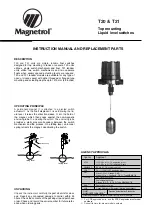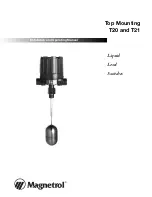
Chapter 5
Setup and Configuration
RUGGEDCOM RSG2488
User Guide
124
Bridge Diameter
bridge is used to select the root port. In all cases the lower ID, path cost or port ID is selected as the
best.
How Port Costs Are Generated
Port costs can be generated either as a result of link auto-negotiation or manual configuration. When the link
auto-negotiation method is used, the port cost is derived from the speed of the link. This method is useful when
a well-connected network has been established. It can be used when the designer is not too concerned with the
resultant topology as long as connectivity is assured.
Manual configuration is useful when the exact topology of the network must be predictable under all
circumstances. The path cost can be used to establish the topology of the network exactly as the designer
intends.
STP vs. RSTP Costs
The IEEE 802.1D-1998 specification limits port costs to values of 1 to 65536. Designed at a time when 9600 bps
links were state of the art, this method breaks down in modern use, as the method cannot represent a link speed
higher than 10 gigabits per second.
To remedy this problem in future applications, the IEEE 802.1w specification limits port costs to values of 1 to
20000000, and a link speed up to 10 Tb per second can be represented with a value of 2.
RuggedCom bridges support interoperability with legacy STP bridges by selecting the style to use. In practice,
it makes no difference which style is used as long as it is applied consistently across the network, or if costs are
manually assigned.
Section 5.2.1.5
Bridge Diameter
The bridge diameter is the maximum number of bridges between any two possible points of attachment of end
stations to the network.
The bridge diameter reflects the realization that topology information requires time to propagate hop by hop
through a network. If configuration messages take too long to propagate end to end through the network, the
result will be an unstable network.
There is a relationship between the bridge diameter and the maximum age parameter. To achieve extended
ring sizes, RuggedCom eRSTP™ uses an age increment of ¼ of a second. The value of the maximum bridge
diameter is thus four times the configured maximum age parameter.
NOTE
The RSTP algorithm is as follows:
• STP configuration messages contain age information.
• Messages transmitted by the root bridge have an age of 0. As each subsequent designated bridge
transmits the configuration message it must increase the age by at least 1 second.
• When the age exceeds the value of the maximum age parameter the next bridge to receive the
message immediately discards it.
IMPORTANT!
Raise the value of the maximum age parameter if implementing very large bridged networks or rings.
















































